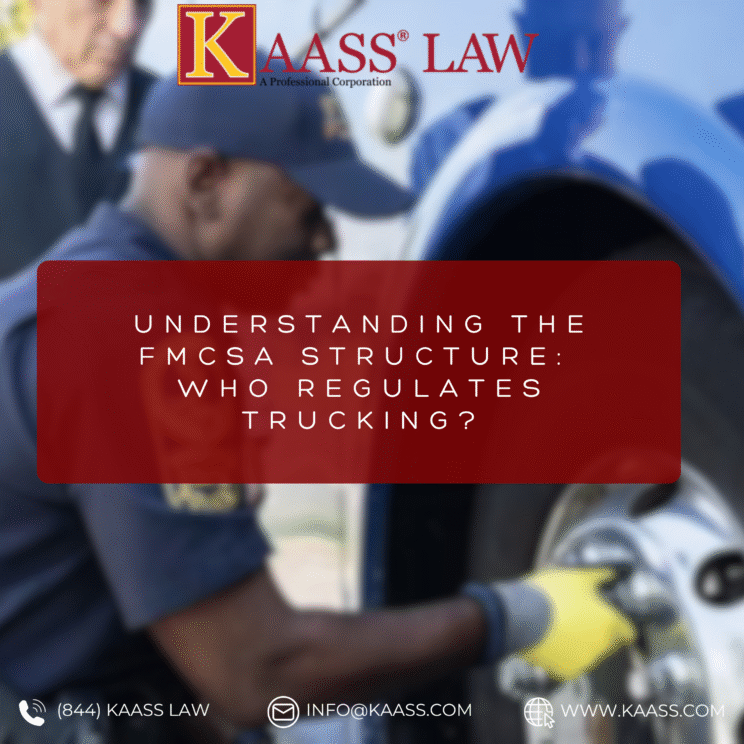After a serious truck accident, you will often hear references to “FMCSA regulations.” The Federal Motor Carrier Safety Administration (FMCSA) is the primary government agency overseeing the trucking industry. However, few people understand how this powerful agency actually works. For victims of truck accidents, knowing the FMCSA Structure is important. It helps to understand who sets the safety rules and who enforces them.
This article will break down the organization of this crucial agency. We will explain its place within the larger Department of Transportation. We will also detail the key offices within the FMCSA and what they do.
The Big Picture: FMCSA’s Place in the Department of Transportation (DOT)
First, it’s important to understand that the FMCSA is not a cabinet-level department itself. Instead, it is a major administration within the U.S. Department of Transportation (DOT). The DOT is the top federal body responsible for all aspects of transportation in the United States.
The FMCSA is one of several distinct administrations under the DOT’s umbrella. Its peers include well-known agencies like:
- The Federal Aviation Administration (FAA), which oversees air travel.
- The Federal Highway Administration (FHWA), which manages federal highways.
- The National Highway Traffic Safety Administration (NHTSA), which focuses on vehicle safety standards and traffic safety.
While these other agencies have their own missions, the FMCSA has one specific and critical job: to improve the safety of commercial motor vehicles (CMVs) and save lives.
Inside the FMCSA Structure: The Key Offices
The FMCSA itself is made up of several key offices. Each office has a specific role in the agency’s mission. Understanding these roles is key to understanding the overall FMCSA Structure.
Office of the Administrator
This is the leadership of the agency. The President of the United States appoints the FMCSA Administrator. This office sets the overall policy direction and priorities for the agency.
Office of Enforcement
This is the “boots on the ground” arm of the FMCSA. This office is responsible for ensuring that trucking companies and drivers follow federal safety rules. Its duties include:
- Conducting safety audits and compliance reviews (like the New Entrant Safety Audit for new companies).
- Investigating trucking companies with poor safety records.
- Issuing fines and penalties for violations of FMCSA Regulations.
- In serious cases, ordering unsafe carriers or drivers to be taken off the road.
The findings from this office are often critical evidence in a truck accident lawsuit.
Office of Policy
This office is the rulemaking division. The Office of Policy develops new safety regulations and updates existing ones. They also work with Congress on legislative matters related to trucking safety. For example, when Congress passes a new transportation bill, this office is responsible for implementing its trucking-related provisions.
Office of Research and Technology
This is the data hub of the FMCSA. This office collects and analyzes crash statistics and other safety data. They research the causes of truck accidents, such as driver fatigue or equipment failure. They also evaluate new safety technologies, like automatic emergency braking or advanced driver-assistance systems.
Field Operations
This office manages the FMCSA’s network of regional and state-level divisions across the country. These are the local offices where auditors and investigators are based. They are the ones who actually visit trucking companies to conduct inspections and audits.
Why the FMCSA Structure Matters for Your Truck Accident Case
Understanding the FMCSA Structure is not just an academic exercise. For a Personal Injury attorney handling a truck accident claim, it is a practical roadmap for gathering evidence. An experienced lawyer uses this knowledge to hold a negligent trucking company accountable.
For example, an attorney knows to:
- File a Freedom of Information Act (FOIA) request with the appropriate FMCSA office to get a company’s complete safety profile, including crash reports and past violations.
- Use the data from the Office of Research to show industry-wide safety standards.
- Use a violation found by the Office of Enforcement to prove that the trucking company was negligent.
Knowing which part of the agency to target for specific information is a key part of a thorough investigation.
How KAASS LAW Can Help
At KAASS LAW, we have a deep understanding of the complex regulations that govern the trucking industry. We know that a successful truck accident case requires more than just looking at the police report. It requires a deep dive into the trucking company’s history of compliance with FMCSA Regulations.
Our Personal Injury attorneys have the experience to handle these serious and complex cases. We know how the FMCSA Structure works and how to use tools like FOIA requests to get the evidence needed to build a powerful case. We fight to hold negligent trucking companies accountable for the harm they cause. If you or a loved one has been injured in an accident involving a commercial truck, please contact us for a free, confidential consultation.
Conclusion
The FMCSA Structure is a complex network of offices designed to enforce safety in the trucking industry. From the policymakers in Washington D.C. to the investigators in the field, each part of the agency plays a role. For victims of truck accidents, this structure is more than just a government chart. It is a source of rules, records, and evidence that can be used to prove negligence and achieve justice. An attorney who understands this structure is better equipped to fight for the full and fair compensation you deserve.

